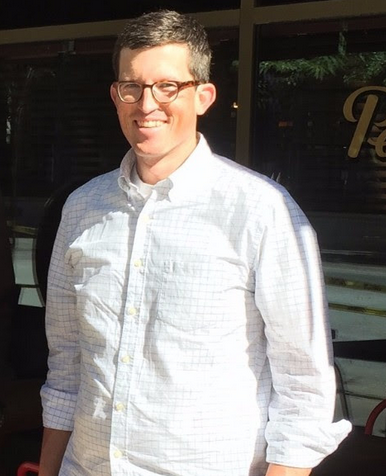Meet Denver’s First Full-Time Pedestrian Planner

Mayor Michael Hancock made room in this year’s budget to hire Denver’s first full-time pedestrian planner, and Denver Public Works recently filled the post. His name is David Pulsipher.
Pulsipher comes to the Mile High City from the Chicago Department of Transportation, where he headed up a program focusing on pedestrian infrastructure near Chicago’s 1,500 schools and parks. He’s worked in the private sector for Alta Planning and Design, and has worked on various transportation plans for Western cities and towns. He’ll play an important role in Denver’s master plan for pedestrians and trails, as well as the city’s Vision Zero effort to end traffic deaths.
WalkDenver’s Gosia Kung and Jill Locantore sat down with Pulsipher and wrote up the discussion. Here are highlights from the interview — check the WalkDenver website for the full version.
How do you think the walkabilty of Denver compares to the other cities you’ve lived and/or worked in? What is your first impression of the biggest challenges and opportunities related to walkability in Denver?
I would say — comparable. Every big city I’ve lived in (Washington DC, Los Angeles, Chicago) has its challenges and opportunities for improvement. The western U.S. has challenges that are more prevalent than the Eastern U.S., in that we just have so much more space. We haven’t been forced into density, and we have a greater proportion of roadways that were designed for the car first, as opposed to being retrofitted for car use. Wide, high volume roads are obviously one of the primary obstacles to the pedestrian environment.
That being said, often times roads that are designed for high volume can often present the biggest opportunities, symbolically. When a city redistributes right of way for pedestrians, transit users, or bicyclists, it reflects the values of the city and an understanding that multi-modal planning is the future of transportation in the U.S. I see that very clearly in Denver.
My first impression of the biggest challenge facing Denver is providing a complete pedestrian network. We are a big city, geographically. So for pedestrians, that is a challenge. We need a robust pedestrian network that connects us to school, work, transportation, and recreation. Being a large western city and providing superior pedestrian infrastructure citywide is a big opportunity. I want to help Denver be an example on that front.
What are some big ideas from other cities you’ve lived and/or worked in that you think we could implement here?
In a big picture sense, I really liked how in Chicago we used data as the foundation for prioritizing improvements. This added a lot of transparency to our projects — and even though some of the public may have felt like the way we calculated (weighting, specific data points) could be modified, at least they could understand where we were coming from. It takes a lot of the mystery out of infrastructure development. That is something I’d like to bring to Denver — a transparent and data driven approach to project prioritization.
What drew you to Denver?
I grew up in Aurora, and loved going to Denver as a child and as a teenager. It was the “big city.” My father grew up in Denver, and I had incredibly fond memories of visiting my Grandparents who lived on the Northwest corner of Washington Park on Virginia & Downing. When I was in college at Boulder, I loved taking my out-of-state friends to cool places in Denver that my parents had shown me. Denver has always had a warmth and familiarity to me, and has always felt like home. After college, living in Denver was the first time I had actually lived in a city. I loved living in a place where I could access parks, movies, concerts, food — all by foot. When I left Denver in 2005 I didn’t realize how long it would take me to get back. Prior to working for Public Works, I had been actively looking to get to Denver for the past eight years. I couldn’t be happier to be back and feel incredibly honored to have the position I do.


